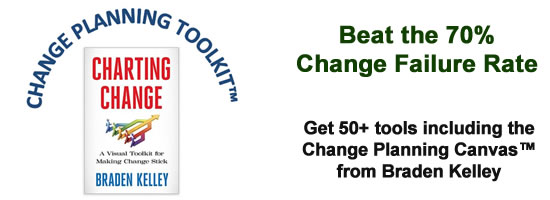3 Ways to Systematically Come Up with Breakthrough Ideas
 Every organisation and every leader that you talk to today, wants to build a culture of innovation and a breakthrough product as soon as possible.
Every organisation and every leader that you talk to today, wants to build a culture of innovation and a breakthrough product as soon as possible.
However, if we look closely, there are three ways to come up with an idea that has the potential to become a breakthrough innovation:
- Imagination
- Insights
- Challenging current assumptions
Lets talk about all the three in a bit more detail.
Imagination:Â
This is probably the way all of us think that we will come across an idea that truly has the potential to become a breakthrough innovation. This is exactly how Einstein developed his theory of relativity. He used to imagine what it would be like to travel alongside a light beam and from this thought experiment came about one of the most profound and innovative breakthrough in science – The Theory of Relativity.
So, it is quite possible for someone sitting in their garage to imagine through thought experiments and come up with ideas for breakthrough innovations.
However, in my experience, this is rare. Though almost all breakthrough ideas require the use of imagination at various stages, I find that people coming up with the breakthrough idea, just through their use of imagination is rare.
Insights:Â
The second way for someone to come up with a breakthrough idea is through insights.
Insight is the capacity to gain an accurate and deep understanding of someone or something.
Challenging Assumptions:Â
This approach to coming up with breakthrough ideas is possibly the easiest way to systematize the process of developing breakthrough ideas. So, lets delve a bit deeper here.
Daniel Kahneman and Amos Taversky have shown clearly and categorically through their research that as humans we all have biases and mental models that we use to navigate the world around us. Which means that all of us operate with a set of assumptions and beliefs about everything around us and how things around us work.
This gives us two excellent places to start our search for breakthrough ideas.
Challenging our Own assumptions:
This is one area which is totally in our control. One way that we can continue to challenge our assumptions is by asking questions that not only unearth our assumption but also help in challenging them. Some interesting questions that we can use to do this could be:
- What we think about our customers? Is that true?
- What kind of customers do we have? Is that the best kind of customers we could have?
- What do we think about what we are doing? What our vision is? Is that the best vision that we could have?
- Why we are doing what we are doing? What else could we do to achieve the same results?
- What would it mean if we were to do this same thing but at a 10x or a 25x scale?
- What would it mean if we were to do this at a fraction of cost that we currently do it for?
- What would we do if the top 10% of our customers stopped giving us business?
- What would we do if our delivery model became obsolete?
- What would we do if we were to lay off all our sales teams?
- What would we do if we were banned by the government to do what we do in the country that we do it in?
- What would we do if we wake up tomorrow and have no cash in our banks?
These are some examples of questions that will force us to think about something that we take for granted.
Then there are other ways for us to challenge our assumptions and come up with potential breakthrough ideas that is simple yet profound:
- Products to Services or Services to products
- Outright selling to subscriptions or Subscriptions to Out-right selling
- Going from mass-market to premium or Going from premium to mass-market
- From selling to fortune 100’s to startups or From selling to startups to fortune 100’s
If you notice, this is just about trying to figure out if we could do exactly the opposite or reverse of what we are currently doing. This forces us to challenge and break all our assumptions. If we try to answer these questions on a regular basis (quarterly or half-yearly or at least annually), we create the opportunity to come up with breakthrough ideas every time we do this exercise.
Challenging our customers assumptions:
Challenging our assumptions is difficult itself, it is even more difficult to challenge the assumptions of our customers. It is for this very reason that not many people are doing that, just like we don’t do it very often. So, when you do it well, the chances of coming up with a potentially breakthrough idea is very good. Some questions that you could ask of your customers, that can help you identify the assumptions that your customers are working under could be:
- Why do you buy from us ? What are we truly good at?
- Why only so much and why not much more or much less?
- Who do you think are our competitors?
- What do you think are our core capabilities?
- Who are your top competitors? Why?
- What are your key partners? Why?
- What is your vision for your own business? Why?
- What can we do to significantly (10x?) increase the business that you give us?
- Is there a problem that you are struggling with, which if solved would give you the biggest advantage in your market?
Now, it is easy to get carried away when asking some of these questions. We need to be aware of the fact that not every customer is open to answering questions like these. Not many employees of our customers would be able to answer many of these questions.
Also, we need to understand that while we may want to challenge their assumptions and not challenge them personally. There is a small difference between being curious and challenging your customers assumptions and being annoying.
So, when we are in a situation where it is not easy to get access to someone from our customer’s office who are willing to answer our questions, we can use the power of observation to be able to identify the assumptions that your customers are operating under.
We could actually look at what the customer is doing in their business & research where they are spending their time, money and effort. When you then ask yourself, why is your customer doing this and compare it with where their competitors are spending their time, money and efforts, there is a good chance that you can identify the assumptions under which your customer is operating under. If you find that their assumption is flawed, you can go ahead and challenge the same (in a way to explore with them and allow them to come to the conclusion).
What you could do is to ideate within your team and come up with a product or service that could potentially help your customers break out of their assumptions. If you can’t do that, at least bring the assumptions and the flawed nature of them to your customer’s attention and you would have earned their trust.
Conclusion
It is important to understand that if we want to consistently come up with breakthrough innovations, we need to define a process through which we can systematically come up with potentially breakthrough ideas.
In my opinion, the fastest way to come up with breakthrough ideas is to find time to challenge our assumptions.
This post first appeared on Musings of a Salesman and has been re-published with permission
Wait! Before you go…
Choose how you want the latest innovation content delivered to you:
- Daily — RSS Feed — Email — Twitter — Facebook — Linkedin Today
- Weekly — Email Newsletter — Free Magazine — Linkedin Group
 Mukesh Gupta is Director of Customer Advocacy, SAP India Private Limited. He also served as Executive Liaison for the SAP User group in India, and as a Global Lead in Sales & Business Development. He also blogs, and shares podcasts and videos, on his site rmukeshgupta.com
Mukesh Gupta is Director of Customer Advocacy, SAP India Private Limited. He also served as Executive Liaison for the SAP User group in India, and as a Global Lead in Sales & Business Development. He also blogs, and shares podcasts and videos, on his site rmukeshgupta.com
NEVER MISS ANOTHER NEWSLETTER!
LATEST BLOGS
Three things you didn’t know about credit cards
Photo by Ales Nesetril on Unsplash Many of us use credit cards regularly. From using them for everyday purchases to…
Read MoreFive CV skills of a business-minded individual
Photo by Scott Graham on Unsplash The skills listed on a CV help employers quickly understand your suitability for a…
Read More


